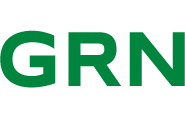Efficiency is more relevant now than ever
Governments around the world place high priority on ensuring that energy is accessible, secure, affordable and sustainable. A crucial part of meeting this challenge is improving energy efficiency, which remains one of the fastest and most cost-effective ways to strengthen energy security, lower costs and reduce emissions.
Two years ago, at COP28 in Dubai, nearly 200 governments recognised the central role of efficiency, agreeing on the goal of doubling the average annual rate of global energy efficiency improvements to 4% per year by 2030.
At the time, IEA analysis had shown that this goal was achievable. Over the first 20 years of this century, energy efficiency improvements, as measured by the rate of change in primary energy intensity, had followed a steady trend, accelerating from an average of around 1% per year from 2000 to 2009 to about 2% per year from 2010 to 2019. We showed that the technologies and policies already existed to double that rate of progress - with 9 in 10 countries achieving a rate of 4% or more at least one year in the past decade.
However, as leaders gather in Belem, Brazil, for COP30, we must take stock and recognise that global progress on efficiency is still not where it needs to be.
The world remains off track for the goal of doubling efficiency progress
Latest data from the IEA shows that, in recent years, rather than increasing towards the 4% goal, global efficiency progress has slowed. The average annual improvement since 2019 is only 1.3%, well below the starting point for the doubling goal. We expect to see that rise to about 1.8% this year, which is a small step in the right direction, but the world is still well off track to meeting the 2030 goal.









